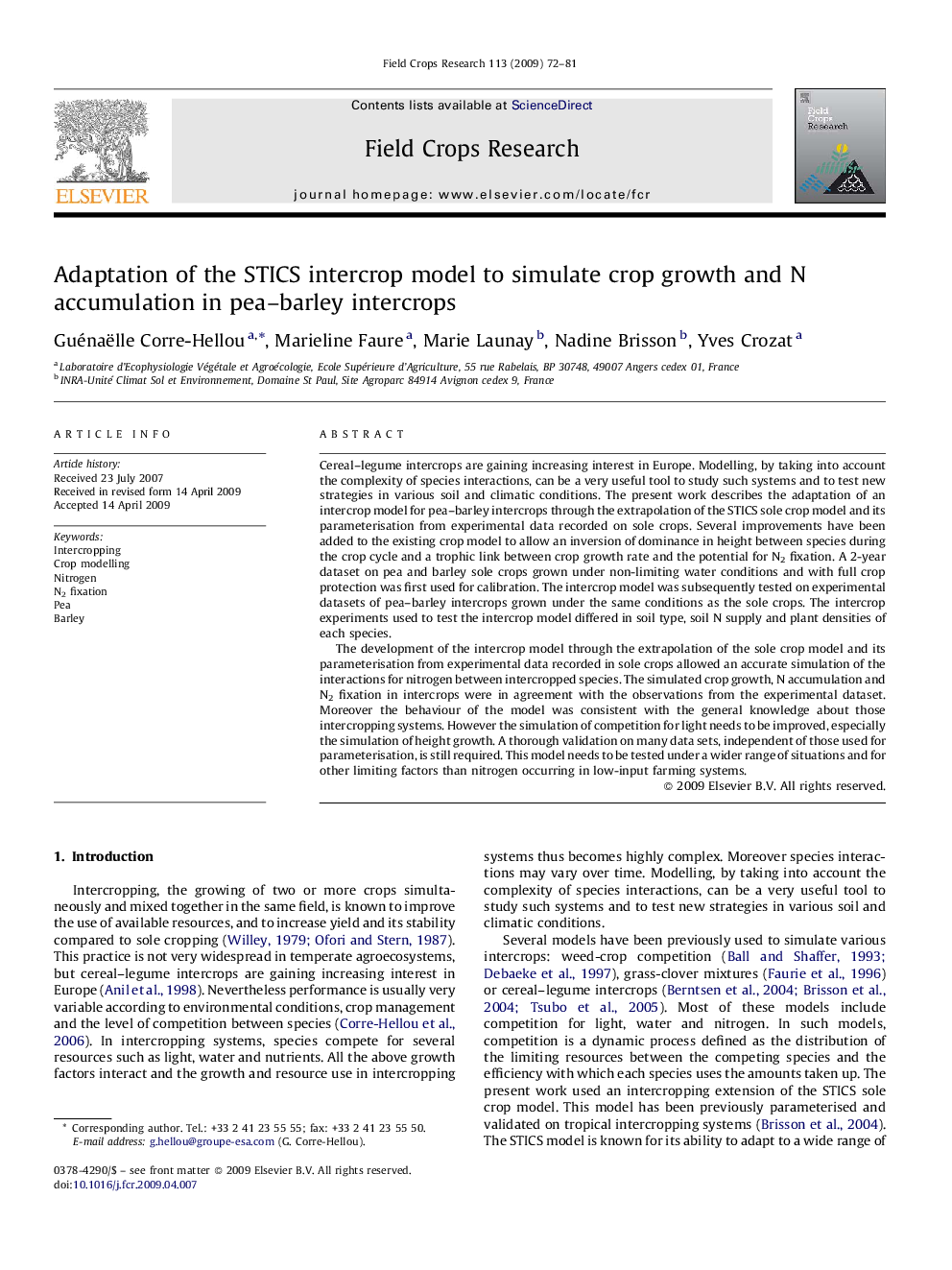| Article ID | Journal | Published Year | Pages | File Type |
|---|---|---|---|---|
| 4511187 | Field Crops Research | 2009 | 10 Pages |
Cereal–legume intercrops are gaining increasing interest in Europe. Modelling, by taking into account the complexity of species interactions, can be a very useful tool to study such systems and to test new strategies in various soil and climatic conditions. The present work describes the adaptation of an intercrop model for pea–barley intercrops through the extrapolation of the STICS sole crop model and its parameterisation from experimental data recorded on sole crops. Several improvements have been added to the existing crop model to allow an inversion of dominance in height between species during the crop cycle and a trophic link between crop growth rate and the potential for N2 fixation. A 2-year dataset on pea and barley sole crops grown under non-limiting water conditions and with full crop protection was first used for calibration. The intercrop model was subsequently tested on experimental datasets of pea–barley intercrops grown under the same conditions as the sole crops. The intercrop experiments used to test the intercrop model differed in soil type, soil N supply and plant densities of each species.The development of the intercrop model through the extrapolation of the sole crop model and its parameterisation from experimental data recorded in sole crops allowed an accurate simulation of the interactions for nitrogen between intercropped species. The simulated crop growth, N accumulation and N2 fixation in intercrops were in agreement with the observations from the experimental dataset. Moreover the behaviour of the model was consistent with the general knowledge about those intercropping systems. However the simulation of competition for light needs to be improved, especially the simulation of height growth. A thorough validation on many data sets, independent of those used for parameterisation, is still required. This model needs to be tested under a wider range of situations and for other limiting factors than nitrogen occurring in low-input farming systems.
